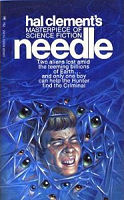
“Our stage swords have neither edge nor point, for they are only intended for show; the wounds they make disappear suddenly when the curtain falls, without the aid of the surgeon with his instruments and lint.”
That’s a description of the stage swords used by an 18th century acting troupe in Theophile Gautier’s Captain Fracasse. But D&Dize it up and you have a pretty cool magic weapon.
Imagine a magic sword called, say, the Stage Sword. An hour after you are wounded by the Stage Sword, you recover all HP you lost from the sword. If you were killed by the sword, you actually come back to life.
PCs given such a sword could get up to all sorts of tricks. Many a devious plan can be made out of being able to convincingly play dead, although as we know from Romeo and Juliet, such schemes generally go horribly wrong. So, no different from the usual PC plan.
I actually used this sword in a theater-based adventure starring ratlings. The local theater company used such a sword in their spectacular, crowd-pleasing tragedies, ACTUALLY BEHEADING ACTORS ONSTAGE in a way that could be repeated night after night.
A devious nobleman replaced the stage sword with a real sword. Half the PCs figured this out and the other half didn’t, leading to Hijinx, in which PCs tried to disable each other, impersonated actors, and shouted “FIRE!” in a crowded theater.
Also, several PCs were backstage, stealing the actors’ shirts. That wasn’t related to the trick sword. It’s just the sort of thing that happens when ratlings are involved.
Here’s another cool magic weapon from Captain Fracasse:
It was of Spanish make, and bore upon its sharp, pointed blade, a sinister inscription in that language, to this effect – “When this viper bites you, make sure That you must die – for there is no cure.” No one could imagine how it had come there…
If you wanted to personalize a magical dagger, you could do worse than have this “sinister inscription” on the blade. You’d probably want to give the dagger a power to match: it does extra poison damage, or it imparts a disease effect on a successful hit.
In 4e, I’d make the dagger a rare item, with a handful of special abilities, because such a cool blade deserves to take center stage.













